One of the most common questions that I get from blog readers and Instagram followers is “how much does it cost to raise a pig for meat?” This is 100% a justified question! For someone who has never done it, they don’t know if it’s $100 or $10,000. There isn’t a whole lot of information out there on pigs. If you don’t personally know someone who raises them, you can be left in the dark. Hence this blog post. So, here comes the answer that everyone hates to hear… it depends.
Yes, I said it. It depends! Different factors affect growth rate, feed conversion, and ultimately the price it costs to raise one pound of pork. It depends on the pigs breed, age, price of piglets in your area, quality and quantity of feed. This is in addition to the amount of space they have to run, how big you want your pig at slaughter, etc, etc. The variables are endless. I cannot give you an exact dollar amount that it will cost to raise a pig for meat. But, I can shed some light on different factors that affect growth, and share what it costs to raise my pigs.
Note that this is not an all inclusive list of every variable that affects growth, FCR, etc. I couldn’t possibly explain every little thing down to the affects lysine has on growth. BUT, what I can do is hit on the “biggies” that are going to have the greatest affect on the cost to raise a pig for meat.
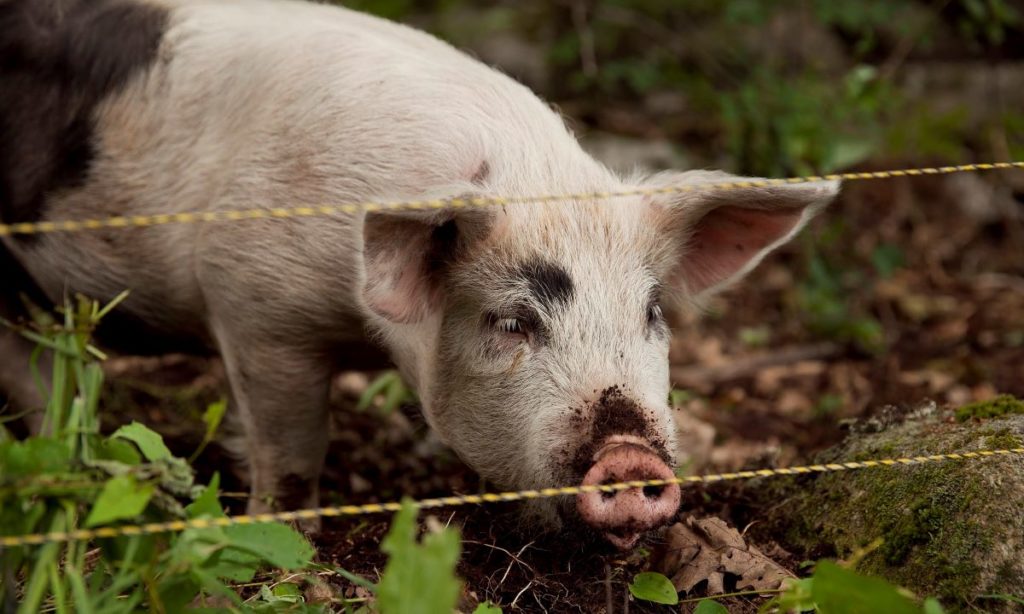
Choosing the Breed
While there are many factors as I previously mentioned that affect growth, it all starts with the pig itself and its breed. Not all pig breeds are created equal friends. There are “lard pigs” and “bacon pigs” which I discuss their distinction in my post on how to render lard. These heritage pigs produce well marbled meat, a healthy does of fat cap, and flavorful cuts. Heritage crosses are what we breed and raise for our own consumption. That will never change. While they are slower growers generally speaking, they are ideal pasture pigs for our model. They clear our woods while simultaneously producing the best pork. Heritage breeds are not the only ones out there though – lest we not forget the commercial breeds! “Pink pigs” such as Yorkshires (among many others) are renowned for their quick growth, leaner meat, and efficient feed conversion ratios.
You could raise a purebred heritage or heritage cross as well as a commercial breed in the same exact setting. Same feed, same housing, same everything, and you will get a different result in the meat. Genetically they are pre-programmed to put on weight differently, and this is something that cannot be completely changed through feed. Experimenting with different breeds and crosses to achieve the ideal combination of growth and marbling is a popular option. It’s also one we take advantage of by breeding our own pigs via AI. Choosing the right breed or cross for you is the first step in getting the pork you want in the end.
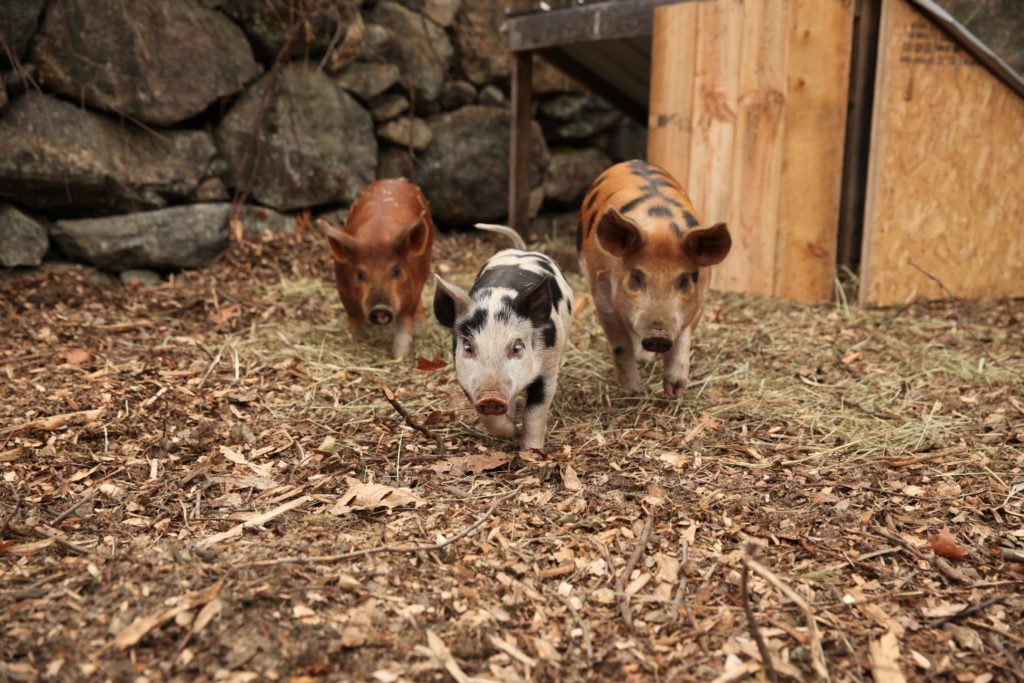
Feed Conversion Ratio
How To Calculate FCR
Before we can dive into the nitty gritty of feed, a general understanding of feed conversion ratio (FCR) is needed. In a nutshell, FCR is the amount of feed it takes to produce 1 pound of finished meat on your plate. This is a measure of efficiency, as a more efficient animal will require less feed to produce a pound of pork. In turn, this will mean you spend less money. If you want to get down to the exact thousandth of a decimal point, FCR calculations can get pretty complicated. You have to account for every scrap of feed wasted, as well as any additional food such as forage or waste/scraps they’re consuming. Luckily, on a homestead we don’t need to be that exact. Which is good, considering most likely aren’t equipped for it. You just need to have a pretty good idea, so you know if you’re doing well or spending too much money. Luckily a very good close estimate that tells you how “good” you’re doing is a simple calculation:
FCR= Total pounds of food fed out / (pig hanging weight – pig starting weight when started on grain)
So for example, let’s say that you brought a feeder pig home and it weighed 30 pounds (this is a live weight which is one reason we are getting a close estimate not exact). You fed it 600 pounds of food over the course of its life and it ended up with a hanging weight of 260 pounds:
FCR= 600 pounds/ (260-30)
FCR= 2.61 AKA it took 2.61 pounds of feed to generate 1 pound of finished pork
Interpreting Your FCR
Is that good? Is that bad? Again, the more efficient an animal is, the less feed it will take to generate one pound of finished pork. So, the lower the number, the more efficient the animal.
Typical FCR’s in the commercial pork industry hover right around the 2.5 mark on average, give or take based on google. I take this number with a grain of salt however, because we aren’t raising commercial pigs. We raise heritage cross breeds and the conditions and environment we raise our pigs in is nothing like the commercial pork industry. That’s kind of the point right? My pigs run in the woods free while burning calories in the process. I will never be on par with the “standard”, and I am okay with that. To me it’s all about the quality of life for the animal and the pork. Still, it is good to know what the standard is, so that you have something to compare to.
While FCR may seem cut and dry, like many things it isn’t. It’s highly subjective to interpretation on a small scale like a homestead. Just because an animal has an efficient FCR doesn’t mean you will be happy with the end result. Commercial breeds are generally speaking highly efficient. But, if you don’t like leaner cuts and are specifically looking for good marbling and fat, you may be sorely disappointed despite your pigs efficient growth.
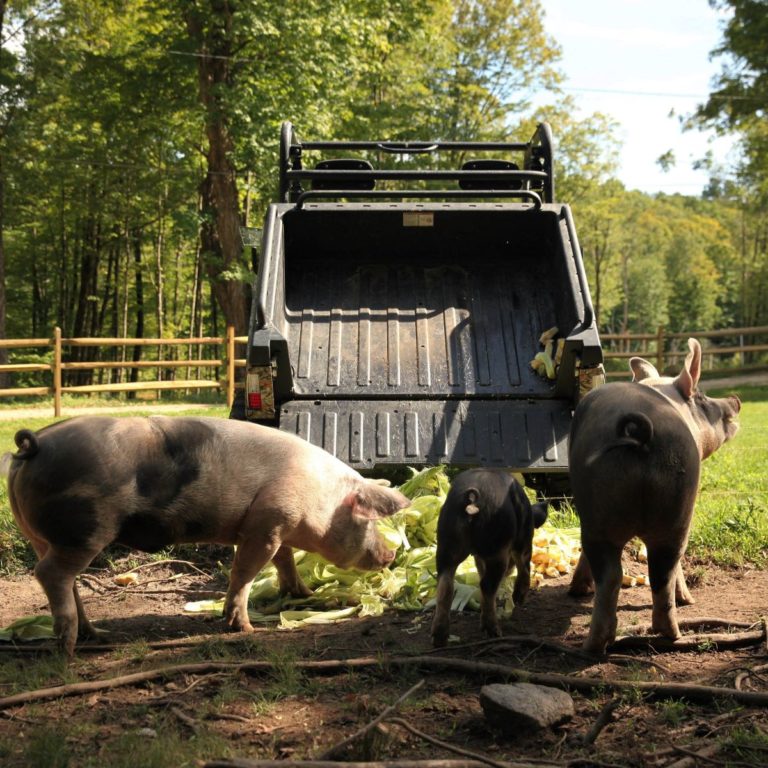
Factors that Affect FCR
There are many factors that affect an animal’s growth and in turn, FCR. As previously mentioned the breed and an animal’s genetics have a significant affect on growth and efficiency. Access to fresh water, overall health, parasite load, climate, and sanitation/living conditions can have a great deal of an impact on growth as well. Aside from this, there are other factors that make a significant effect:
FEED
First and foremost, feed. I cannot emphasize enough the importance of quality feed. As the saying goes, garbage in garbage out. You are what you eat, and the animal you’re eating is what IT ate. You get the picture.
Finding quality grain however, without breaking the bank is a delicate balance. Beware of the temptation to go and buy the cheapest feed you can. It may seem like you are getting a good deal if you look at it from the standpoint of price per pound of feed. But, if the feed is garbage, you very well could end up feeding out 2-3x the amount as you would with quality. In turn, you could spend more money!
While mycotoxins are a concern with any animal, pigs are particularly susceptible to their effects. These are toxins created by different molds that get into an animals feed by improper harvesting and storage of grains. A quality feed company will regularly check for mycotoxins. They can have devastating effects not only on the animals overall health and reproduction, but growth. I went through a mycotoxin scare when I was buying feed from a local farm. When I questioned their testing protocol and it didn’t meet my standards, they immediately lost my business. Lesson learned.
We feed organic, non-gmo, soy free feed to our animals, and it isn’t exactly the easiest to find. I have tried several different feeds over the years, and purchased it in varying amounts. We finally have a good system in place where we purchase feed in bulk to get the best price and have it shipped to us. Always buy it in bulk if you can properly store it, it saves a TON of money.
While any scraps/kitchen waste and forage the pigs have are icing on the cake, likely grain is the bulk of diet. So, quality is paramount. Last year we ended up with an FCR of 3.70, which given the conditions in which we raise our hogs and their size (which I will discuss further), I was satisfied with.
LEVEL OF ACTIVITY
This may seem like an obvious thing to mention, but I feel like it could be easily overlooked. Level of activity is going to have a significant impact on the cost to raise a pig for meat. This is a big part of why large scale operations have such efficient FCR’s whether it be pigs or even meat chickens. An animal kept in confinement is less active, meaning it burns less calories. If you have an active animal that’s running around, they are not going to gain weight as quickly or efficiently!
We have a system of rotational grazing pigs through the woods on electric and finishing them in the fall. Exercise is something we not only allow, but encourage. Not only do our pigs have an exceptional quality of life running around a half acre at a time, but using those muscles creates delicious pork. Sure, you may need some more feed to generate a pound than an animal that lives in a barn stall. But to us, it’s worth it not only to allow our pigs help us clear our land, but produces premium cuts of pork in the process. It’s a balancing act of enough space for activity and to maximize clearing, but not too much that we are spending a ridiculous amount of money on feed.
MARKET WEIGHT
The size of the hog at butcher all comes down to a matter of personal preference. The industry standard for “market weight” has slowly changed over the years. For the longest time it was 250 pounds live, but over time as genetics have improved it has slowly crept up to the 290-300 pound range.
Airing on the side of caution you can anticipate a 30% loss from live to hanging weight once the viscera and blood has been removed. That means if you raised a 250 pound hog, it would yield a 175 hanging weight carcass. I don’t know about you, but that is not enough meat for this gal. Nor would those cuts have a hefty enough fat cap and marbling for me. Luckily, one of the many benefits to raising your own animals for meat is that they can be as big or as little as you want when it comes time to butcher. There is no “one way” to do it, suit it to your tastes!
But why is this the “standard”? I will save you my side rant on Americans fear of fat and their obsession with lean, “other white” meats…
Aside from that, there is in fact some scientific basis for this. Once a pig reaches 250-280ish pounds, there is a noted drop in their feed conversion efficiency. They are not converting feed to lean meat as efficiently when they’re 270 pounds as when they were 200 pounds. So if you raise them over the mark, it will have an effect on your overall FCR. In the commercial industry, they are constantly striving to improve the genetics to produce an efficient FCR closer to this 300 pound range. Hence the slowly creeping market weight size. Remember, these are commercial hogs though, not the average homesteaders stock. Manage your expectations appropriately.
You will see below in my numbers that I raise some pretty big pigs. It’s a personal preference! They hang as big as the live “market weight”! So, is their efficiency diminished because of this, affecting my overall FCR? Absolutely. But, I do it because it gives me the ideal fat cap and marbling for my liking, as well as a hefty supply of leaf lard and back fat for rendering. We love our fats in this household, and it is just as important to us as the meat itself. We may lose some efficiency to get there, but for us it is 100% worth it to get the pork that we want on our plate.
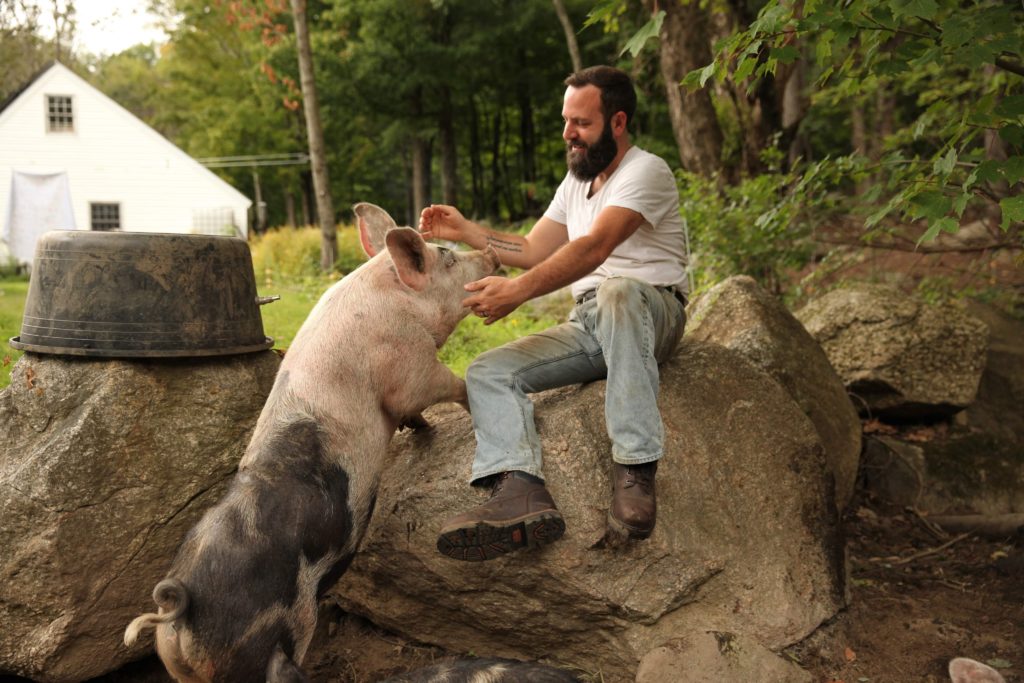
Price Per Pound for My 2019 Pigs
Okay, so now that I’ve talked to your ear off about what FCR is and some of the things that may affect it let’s get to what’s really important. How much does it cost to raise a pig for meat? Like I said, having a general idea of FCR is a very good thing, but for me it ALL comes down to the price I’m paying per pound. This is the number that I calculate immediately once I have hanging weights and butchering cost for my pigs, not the FCR. Some people may shudder looking at my FCR of 3.70 last year and think “how horribly inefficient!” But I’m over here like, “have you seen how cheaply I was able to raise my organic/non gmo/soy free pork?!” So, let’s get into it:
Below are the costs associated with all three of of the pigs we raised last year in 2019: Sheldon, Ralphie, and Smidge. Keep in mind Smidge was a runt and totally threw off the curve. Because we raised them together, fed them together, etc I calculated the entire group as an average. There is no way to know exactly who ate how much, but I know what the group as a whole consumed.
We breed ourselves and I didn’t “buy” them, but I still put a dollar amount on them that would be what we would have sold/expected to pay for similar pigs. There are afterall costs associated with breeding! Feed costs include the 1.5 tons of grain they ate throughout the year, factoring in the cost of shipping. The butchering cost includes the processing of all three, with some smoking (our friends who bought Ralphie had their cuts smoked while we smoked our own). There were no additional crazy costs that I have associated with raising them as we had infrastructure in place, no sickness that required a vet appointment, etc
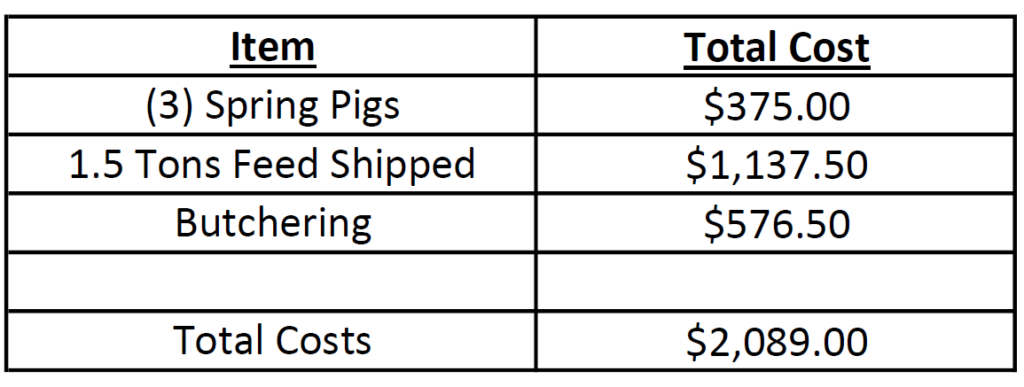
Then comes a matter of how much each pig hung at (weight after they have been dressed). Hanging weight is the weight that is used “in the biz” as the measure to base price off of. It includes fat, bones and meat, all of which are things that we get back from the butcher. Hanging weights for all three were:
Sheldon 289 pounds + Ralphie 262 pounds + Smidge 106 pounds
= 657 POUNDS OF PORK
Can I get a drumroll please...
$3.18 PER POUND of ORGANIC/NON-GMO/SOY FREE Woodlot Pasture Pork
Can I get a hell yeah?
Now, let’s remember this is the average price per pound for an entire pig, and is not factoring in different cuts. So, think about that. That “premium” expensive bacon (that is arguably garbage) found at any regular ole’ grocery store fetches over $6.50 a pound. I pay a little over $3! And the quality is not even in the same league, not to mention the fact it’s 100% organic.
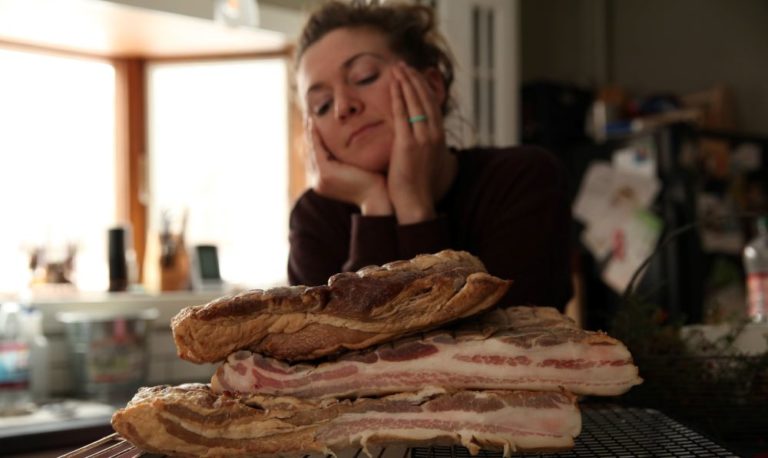
I also can’t help but think how much better my numbers would have been if Smidge wasn’t in the picture. She was a runt, and sometimes you get a pig that just doesn’t want to grow. The potential for genetic capability was there, just look at her brothers. So, there is no question she thew off the numbers, but to what extent I will never know.
There are so many ways to cut costs, and factors that will affect the cost to raise a pig for meat. Grain price is going to be a huge factor, as is butchering costs. This year we are switching to a mobile butcher who will do an on site slaughter as opposed to taking the pigs to a slaughterhouse. While this is a slightly more expensive option, it’s more convenient for us and better for the animal. So it’s a cost we are willing to incur.
There are SO MANY VARIABLES at play that affect the cost to raise a pig for meat. Like anything else with homesteading there is no one right way to do it. It’s all about raising the quality of meat that you want and of course trying to do it without breaking the bank. It’s all about finding reliable and quality feed/piglet sources, and a system that works for you. Hopefully I have been able to give you some food for thought, as well as shed some light on raising your own pork!
Happy Pig Raising,

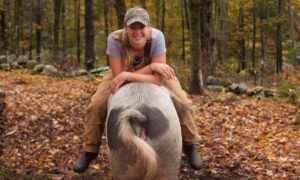
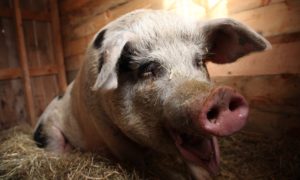
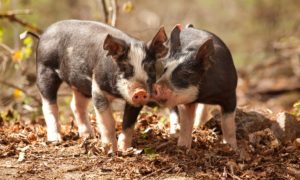
OK…whoa! That was pretty comprehensive! Thank you. Our journey to buying a farm this year and how we are going to earn a bit of income will depend upon my being able to explain to Don- my partner in crime ?- things like FCR, etc. He is a numbers guy and wants to see it all on paper. Totally understandable but first I have to understand it myself. Haha. Do you all ever sell the pork you raise? I assume we’d be talking about different numbers.
Numbers are very powerful! But, can be subject to interpretation to an extent like I said. Now you’re prepared to have hte discussion! And we usually sell one finished hog (the one we raised along with ours). We prefer to sell piglets as feeders as opposed to finished
Oh my gosh Kate, I’m so glad you wrote this!! We recently got pigs on Valentine’s Day (best Valentine’s Day present ever LOL!!) and I am having a hard time finding organic non-gmo soy fee feed. Where do you order yours from? Thanks!!
That’s the BEST Valentines Gift!!!!!! I get our feed from Stone House Grain in NY
Thank you! I gave them a call and they won’t ship to us. Bummer. 🙁
Hi, Found this through IG. Just wanted to thank you for the great read. I’m now even more excited to raise a couple of pigs this spring. Thanks again, Alysia @goldenrodfarm
Awesome! Best of luck!
This is such a great advice blog. I feel so inspired and ready for our spring pigs. Winter seems to have left the station (for now) but it’s a good time to start getting ready!
Absolutely!!! winter is the time to prep so you’re ready to hit the ground running come spring!
Pingback: How to Choose a Gilt for Breeding - The Modern Day Settler
Thank you for sharing priceless info for us beginners! How big was the largest pig at butchering? However, you don’t get the same amount of meat in pounds at the completion of processing as the hanging wt…. So after processing , how many pounds of meat did you end up with? Thank you!!
The largest was Sheldon last year he hung at 289 pounds. There is no way to determine how much meat you get versus meat and bone unless you debone every. single. cut. and then reweigh it. Hanging weight (including fat, meat, and bone) is the industry standard.